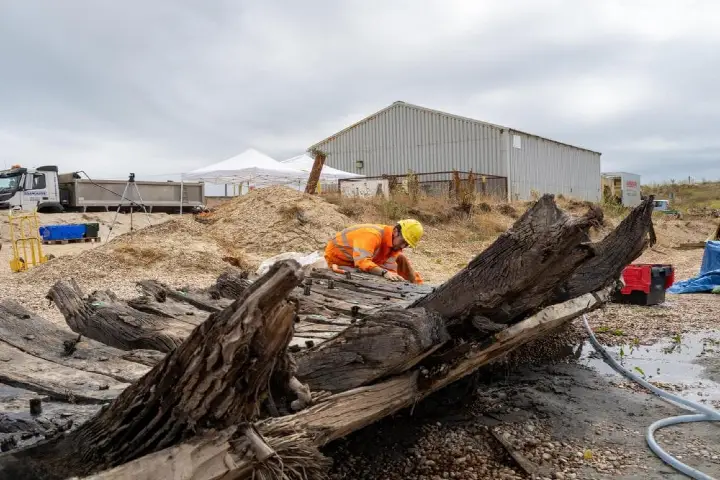Digging out gravel in a quarry in England’s Kent region, workers were astonished to unearth remains of a ship that dated back to 16th Century. As they were unable to identify what it was, they handed their discovery to experts from Wessex Archaeology.
As per smithsonianmag.com report what makes this finding unusual is that the place where it was discovered is 1,000 feet away from the coastline and archaeologists feel that this area in the past may have been situated on the shore. The vessel according to the scholars may have forsaken when it may have ceased to be operational or it may have crashed on the coast.
The discovery is important as there are few Elizabethan era ships available to study and this find could help in gaining vital insights about the “great period of change in ship construction and seafaring” as stated by Andrea Hamel, Wessex Archaeology’s marine archaeologist.
The experts looked closely at the 100 timbers from the ship and using a method called dendrochronological analysis that looks at the tree ring growth patterns of timber, they figured that the builders of the ship; had used English oak trees grown between 1558 and 1580 for the vessel.
The construction technique reflects this timeline. The builders first made the internal framing, and then added flush-laid planking to make the outer hull. This was the period when construction style of ships was changing and northern European shipbuilders adopted this method.
In the past, the process of constructing was to use a traditional clinker method which was popular among Vikings and one of its prominent attributes was overlapping planks.
During this period trade was flourishing and the English Channel was bustling with ships used for trading and commercial purposes. Highlighting this the researchers noted: “Although the ship remains unidentified, it represents an era when English vessels and ports played an important role in this busy traffic.”
Highlighting the importance of the find, Antony Firth, who heads Historic England’s marine heritage strategy in a statement observed: “The remains of this ship are really significant, helping us to understand not only the vessel itself but the wider landscape of shipbuilding and trade in this dynamic period.”
Historic England is a government organisation that works in the field of preservation of the country’s heritage.
Besides dendrochronological analysis, the researchers also adopted digital photography and laser scanning technologies to study the ship. Once they have finished analysing the ship’s timbers, they plan to rebury it to protect it for years to come. Even though wood which is exposed to air and water can only last for a few years before it rots, in this case the silt layer may have guarded it from oxygen and stemmed its decay.




















